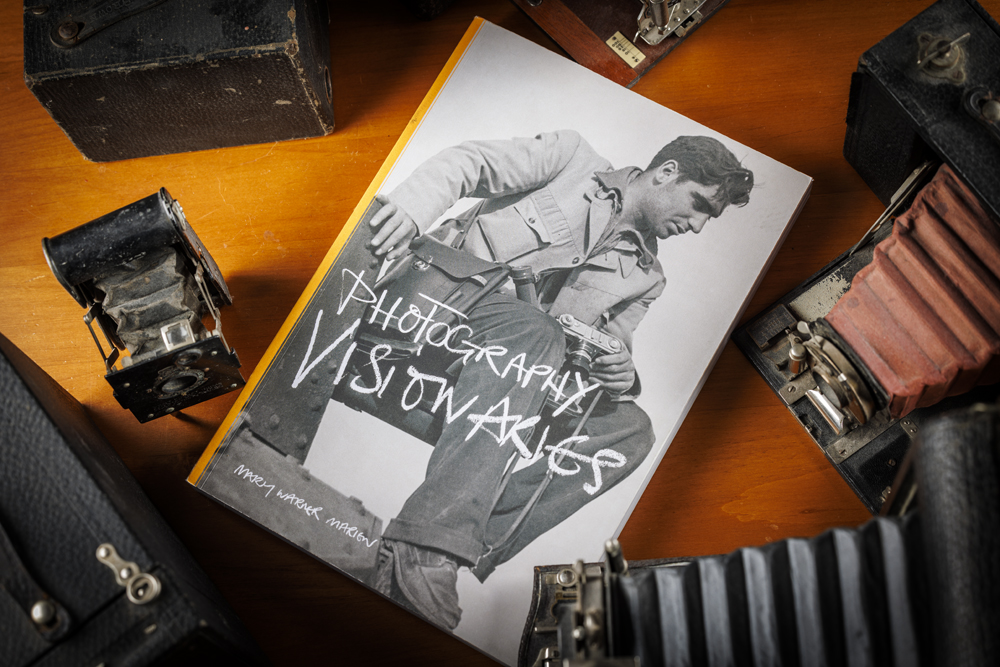Photography Visionaries by Mary Warner Marien
Photography Visionaries is a neat survey of 75 great photographers spanning the 19th, 20th and 21st centuries.
Each photographer is represented by at least three of their best-known images, along with a concise, well-written and insightful summary of their significance.
Each essay/biography is a stand-alone document, so that readers need not move through the book in chronological order (although that is how the photographers have been arranged). One particularly nice aspect is that each essay also includes a photograph (frequently a self-portrait) of the photographer, mostly taken in their prime. I’ve found that while I may be familiar with the work of many photographers, I’m often ignorant of what they actually look (or looked) like. Not necessary to appreciate their work, but it does satisfy one’s curiosity.
Each summary is also accompanied by a timeline that highlights key milestones in the photographer’s own lifeline, along with placing their lives into the context of the times.
Declaring someone to be a photography “visionary” is risky. For much of the 20th century, great photographers were often treated by historians and critics as having near supernatural powers to see the world in ways that mere mortals could never achieve. There was also a tendency to imagine that each individual photographer had a unique vision bestowed on him or her (usually him) that emerged fully developed and independent of others.
Perhaps the most extreme example being Alfred Stieglitz, who was declared by his biographer (and lover) to be an “American Seer.” A mantle that Stieglitz seemed only too happy to accept and zealously guard long after his own creative spirit had burned out and times had passed him by.
The idea of a unique vision, of course, has never really been true. Almost every photographer has produced images that could easily have been taken by others – a phenomenon that underlies much of Geoff Dyer’s The Ongoing Moment. (Discussed Here.)
Fortunately, in her introduction Warner Marien offers a concise and reasonable explanation for her use of the visionary designation, explaining that the photographers included in the book, speak “to the notion of a visionary as a ‘visioner;’ not a prophet, but a dedicated experimenter, whose ideas and pictures enlarge the medium while expanding the scope and range of human understanding.”
As with many surveys of photography that have been published in recent years, the author has adopted an inclusive approach that highlights the contributions of women, non-white, non-American and non-heterosexual photographers, that have been overlooked or excluded from much of photography’s history. Equally important, she is no art photography snob. That is, she includes photographers who practiced or practice in many different fields and genres, but whose work has influenced and cross-pollenated other fields of photography.
Photography Visionaries is the kind of book that you can set on your nightstand and leisurely pick through the biographies to find someone you may have never heard of; photographers that you want to know why they are so well regarded among critics and historians; or simply someone you want to know a bit more about. But it is much more than random little bites because Warner Marien’s essays help tie the trends together to offer the reader a bigger and more inspiring picture of the works of great photographers.
This is a book that will whet your appetite to discover more about the included photographers as well as others that have influenced today’s photography.
Photography Visionaries on Amazon
The Ongoing Moment by Geoff Dyer on Amazon
